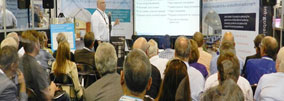The real risks of moisture and mould
Condensation certainly isn’t a new problem. In fact incorrect energy-efficient building design is often the cause of excess moisture and mould growth. And because of the way modern buildings are constructed, once condensation forms it can be hard to detect and lead to huge rectification costs. This article explores issues, and recommended product solutions to combat condensation.
With rising energy costs and environmental concerns, the construction industry has changed the way it builds, bringing in new types of materials and construction techniques. It’s now more common to use lightweight cladding materials in roofs and walls, as well as more wall and ceiling insulation to reduce heat transfer, allowing some surfaces to become cold creating a dewpoint for moisture to condense on.
And with a push to make structures airtight and more energy efficient it’s much harder for moisture to escape. In basic terms, new building design has created more cold surfaces and increased the volume of moisture throughout the building envelope. In order to deal with condensation while maintaining improved energy efficiency choosing the right wrap is critical to improve moisture control and reduce condensation risk. CSR Bradford recommends the use of Enviroseal Vapour Permeable wraps to prevent condensation as it allows water vapour to flow freely through the material and reduces air flow through the wall and roof systems making them more energy efficient. It is also important to consider ventilation of the kitchen, bathroom and laundry.
The environmental effect
But it’s not just the type of construction methods that increase the risk of mould growth. Many environmental factors raise the risk of condensation, such as:
- more people living in the house than intended
- heating and cooling the internal environment
- the climate zone of the building
- buildings on the south side of a hill, or shaded by trees or PV solar systems, getting less thermal warmth in the day
- horizontal surfaces facing the night sky can cool by an additional 5 to 10°C.
Materials matter
Certain construction materials also raise the risk of condensation formation. For example, steel offers little thermal mass and thermally bridges the cooler exterior to the warmer interior and when warm environments meet cold surfaces, it is ripe for condensation build up and mould growth. Once again Enviroseal Vapour Permeable wraps are the best solution as the water vapour will flow from the warm interior through the material and condense on the cold surface. The Enviroseal wrap will then act as a protective water barrier preventing liquid to reenter the building envelope.
The 4 D’s
CSR recommends that external building walls should be designed and built following the BRANZ philosophy for managing water known as the 4Ds - deflection, drainage, drying and durability.
- Deflection devices such as cladding and window head flashings intercept water at the building exterior and deflect it away from critical junctions. This is the first and most important principle.
- Wall assemblies also need to be designed and built to incorporate drainage to allow water that may have penetrated the exterior cladding to drain down the back of the wall cladding and out of the wall assembly.
- Wall assemblies dry as a result of air movement through and behind the cladding systems. The amount of drying that occurs depends on cladding type, sarking type, installation and ventilation behind the cladding.
- All components of a cladding and wall assembly must be arranged to protect the water sensitive materials, to achieve long-term durability of the entire structure.
Impacting health and home
What happens if condensation is left untreated? Structurally, water left within the wall and ceiling cavities can cause timber rot, and reduce nail pull-out strength. It can also wet the insulation batts causing them to go mouldy and dampen the plasterboard. And if condensation is left without a drying path, mould can form and excess liquid water can damage the ceiling lining.
It also poses a health risk. Moist environments provide the perfect breeding ground for dust mites to settle in and trigger allergies. It can also cause microbial infestations, further sparking allergens and impacting air quality. In extreme cases this can lead to respiratory illness of the occupants.
Controlling air to control moisture
Moisture (water vapour) travels by air, so controlling the air flow inside the building structure greatly helps control the buildup of condensation and therefore lowers the risk of growing mould.
While there are many factors that contribute to condensation, the use of non-perforated vapour permeable membranes can help manage this risk. As mentioned products such as Enviroseal help to reduce air flow and create a more energy efficient building, allows water vapour to flow from inside to outside the building structure, and protects the building from external water coming into the walls or roof.
In our next article we’ll explore these membranes in more detail and demonstrate how these wraps can help you manage water vapour movement more efficiently and effectively.



